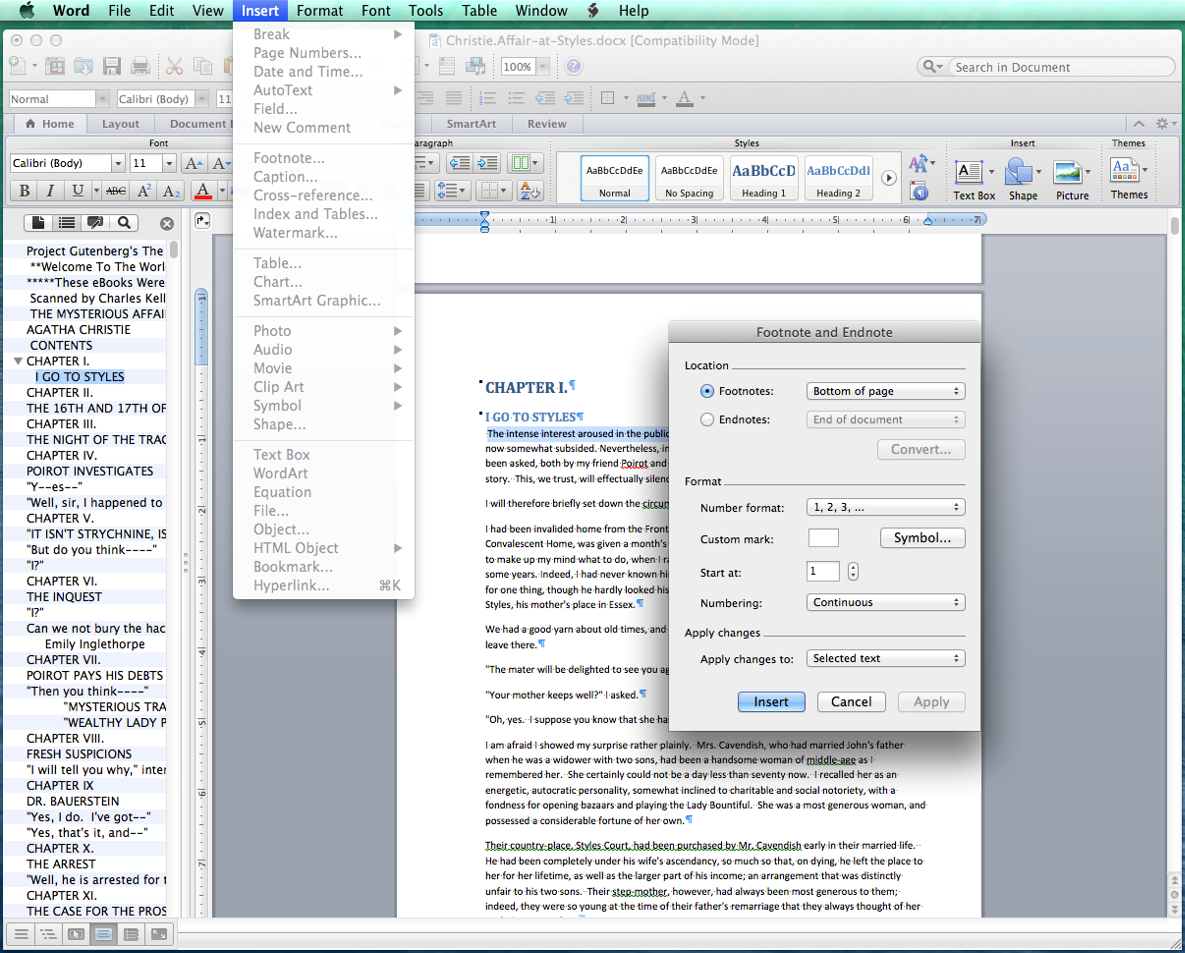
- #Markdown how to add footnote manual
- #Markdown how to add footnote code
- #Markdown how to add footnote plus
Number), and then the corresponding footnote text is written at the end of theĭocument like : This is footnote text.
Footnotes are where the footnote marker is supposed to be ( n is a. Use _underscores_ for italic text and **double asterisks** for bold. Link text with which you are already familiar. Links have a similar syntax: (link url) will create the HTML. Paragraphs are just regular paragraphs with two returns between them, like. Nevertheless, here’s a briefĭescription of the syntax you are most likely to use in your project: The top, it shows you the raw Markdown I typed. The README.md file I had you edit back in Chapterġ is in Markdown, as noted by the. Additionally, Markdown plays nicely with Atom, which has someīuilt in features that make writing in Markdown even more satisfying.īefore getting into the syntax, I’ll mention this fun fact: you’ve already Markdown syntax rules, and then those texts get converted into HTML for your John Gruber in 2004, is an attempt to let you write human-readable texts that The tagsĪre clumsy and get in the way, making it tricky to write “human-readable” You may have already noticed that writing HTML is not a lot of fun. My content will appear in a I call #content Page, and a map will typically not suffice to do so. There’s a reason for making these maps,Īfter all, and for making a web project. The data needed, it’s time to get explicit about the other content in the I still catch myself using the years-obsolete instead of the HTML5 tag, although that's probably just a problem with me.Now that the map for the “Could Be” Project works and we have a good sense of. I frequently screw up the number of asterisks, which is one of the reasons I end up re-editing my answers too often and annoying other people. But the time I would spend editing one of them down, I could write book-sized answers on three other interesting questions I've found. (I know, I shouldn't be writing answers so long that it really matters. It would be much nicer for the reader if the footnotes were hyperlinked. I have brief bits of code in my footnotes all the time.
does work with embedded code, but it looks ugly on most browsers. Part of the reason I use asterisks instead of numbered footnotes is to remind myself that auto-numbered lists and don't work together. doesn't work in combination with some other kinds of formatting. This is clearly an abuse of 's semantic meaning. I want the footnotes to be smaller/less important-looking, but on many browsers, subscript text is too small, as Eugene Siedel's answer shows. 
I've been using \* and \*\* and so on in the text and a - rule followed by \* at the end, and it sort of works, but:

Plus it looks like you know what you are talking about and therefore encourages upvoting. So why not just use links or parentheticals instead of footnotes? Because we aspire to the sort of answers expected in academia where footnotes are de rigueur.

Just writing that example makes me yearn for footnote support even the Markdown code looks clean! The output is more professional looking than my manual footnote technique and includes all sorts of niceties like auto-numbering and inline footnote text.Ģ. PHP Markdown Extra has a really cool footnote syntax 3 that I'd like to have available on Stack Exchange: These lines are _going to_ intersect!

Compared to using advanced links, roll-your-own footnotes seems practically barbaric. It also gets tricky when editing in a new footnote since you need to manually adjust the numbering of notes that come after. tends to break the numbered items and I don't bother to play with it usually. Also, the footnote text ought to be smaller than then text in the body, but adding. There's no easy way to set up links from the footnote mark to the footnote text and back again. It's not that hard to do, but it's still a pain and the results aren't ideal. Here's what I do 1 to simulate footnotes: These lines are _going to_ intersect1!








 0 kommentar(er)
0 kommentar(er)
